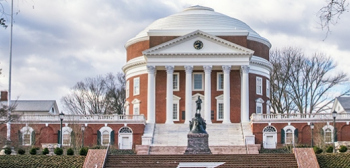- #3 QS Global World Ranking
- PrivateStatus
- Very HighResearch Output
- 17,422Total Students
- 4,909Faculty
- 4,300Int'l Students
The University’s position in the current QS World University Rankings.
Whether the University is funded by the government of that country or state, or funded by private donations.
The research intensity of the University, based on the number of papers output relative to the University’s size.
The number of full time equivalent students enrolled at the University.
The number of full time equivalent teaching staff employed by the University.
The number of full time equivalent international students enrolled at the University.
Stanford University
About
COVID-19 Information:
The Stanford Office of Undergraduate Admission has been closed until further notice. Applications continue to be processed, however, and the office can be contacted via email. All tours, programs and information sessions for prospective students have been cancelled and the Visitor Center is also closed until further notice.
Located 35 miles south of San Francisco and 20 miles north of San Jose, Stanford University is in the heart of Northern California’s dynamic Silicon Valley, home to Yahoo, Google, Hewlett-Packard, and many other cutting-edge tech companies that were founded by and continue to be led by Stanford alumni and faculty. Nicknamed the “billionaire factory”, it is said that if Stanford graduates formed their own country it would boast one of the world’s largest ten economies.
Covering 8,180 acres, Stanford has one of the largest university campuses in the US, with 18 interdisciplinary research institutes and seven schools: the Graduate School of Business; School of Earth, Energy & Environmental Sciences; Graduate School of Education; School of Engineering; School of Humanities and Sciences; Law School; and School of Medicine.
Stanford University was founded in 1885 by California senator Leland Stanford and his wife, Jane, to “promote the public welfare by exercising an influence in behalf of humanity and civilization”. The couple’s only child had died of typhoid, and their decision to build a university on their farm was intended as a memorial. From the start the university was non-sectarian, co-educational and affordable, teaching both the traditional liberal arts and the technology and engineering that was shaping the new America at the time.
Fast forward more than a century, and Stanford counts 19 Nobel laureates within its community and is regularly ranked among the top three universities in the world. Nicknamed “The Farm” from the days when horses roamed there, Stanford’s campus is now a thriving community of more than 11,000 creative and accomplished people from around the world. Nearly all undergraduate and 60 per cent of graduate students live on campus, so it is hardly surprising that student life is rich and diverse, with over 625 organized student groups.
Sport is popular, with students, faculty and staff enjoying state-of-the-art recreational facilities and wellness programs. Stanford students compete in 36 varsity and 32 club sports, including baseball, football, basketball, and squash. Sports teams are referred to as the “Stanford Cardinal”.
Stanford also has a rich tradition of fostering creativity and the arts: there is a vibrant campus arts district and two world-class museums which host regular exhibitions. Eight dining halls, a teaching kitchen and organic gardens provide the campus community with healthy, sustainable meals. The close-knit communal nature of life on campus has even given rise to “Stanford speak”, a special language only spoken on campus.
About
COVID-19 Information:
The Stanford Office of Undergraduate Admission has been closed until further notice. Applications continue to be processed, however, and the office can be contacted via email. All tours, programs and information sessions for prospective students have been cancelled and the Visitor Center is also closed until further notice.
Located 35 miles south of San Francisco and 20 miles north of San Jose, Stanford University is in the heart of Northern California’s dynamic Silicon Valley, home to Yahoo, Google, Hewlett-Packard, and many other cutting-edge tech companies that were founded by and continue to be led by Stanford alumni and faculty. Nicknamed the “billionaire factory”, it is said that if Stanford graduates formed their own country it would boast one of the world’s largest ten economies.
Covering 8,180 acres, Stanford has one of the largest university campuses in the US, with 18 interdisciplinary research institutes and seven schools: the Graduate School of Business; School of Earth, Energy & Environmental Sciences; Graduate School of Education; School of Engineering; School of Humanities and Sciences; Law School; and School of Medicine.
Stanford University was founded in 1885 by California senator Leland Stanford and his wife, Jane, to “promote the public welfare by exercising an influence in behalf of humanity and civilization”. The couple’s only child had died of typhoid, and their decision to build a university on their farm was intended as a memorial. From the start the university was non-sectarian, co-educational and affordable, teaching both the traditional liberal arts and the technology and engineering that was shaping the new America at the time.
Fast forward more than a century, and Stanford counts 19 Nobel laureates within its community and is regularly ranked among the top three universities in the world. Nicknamed “The Farm” from the days when horses roamed there, Stanford’s campus is now a thriving community of more than 11,000 creative and accomplished people from around the world. Nearly all undergraduate and 60 per cent of graduate students live on campus, so it is hardly surprising that student life is rich and diverse, with over 625 organized student groups.
Sport is popular, with students, faculty and staff enjoying state-of-the-art recreational facilities and wellness programs. Stanford students compete in 36 varsity and 32 club sports, including baseball, football, basketball, and squash. Sports teams are referred to as the “Stanford Cardinal”.
Stanford also has a rich tradition of fostering creativity and the arts: there is a vibrant campus arts district and two world-class museums which host regular exhibitions. Eight dining halls, a teaching kitchen and organic gardens provide the campus community with healthy, sustainable meals. The close-knit communal nature of life on campus has even given rise to “Stanford speak”, a special language only spoken on campus.
University highlights
- 2012#15
- 2014#7
- 2015#7
- 2016#=3
- 2017#2
- 2018#2
- 2019#2
- 2020#2
- 2021#2
- 2022#=3
- 2023#3
- 2024#5
- 2025#6
- 2026#3
Campus locations
Stanford University,
450 Serra Mall , Stanford , California , United States , 94305
Similar Universities
Haas School of Business
Haas School of Business, Berkeley
University of Miami Patti and Allan Herbert Business School (Miami Herbert)
221 Jenkins Building, Coral Gables
McIntire School of Commerce
125 Ruppel Drive, Virginia
Questrom School of Business
595 Commonwealth Avenue, Boston
Simon Business School
245 Gleason Hall, Rochester
San Ignacio University
3905 NW 107th Ave, Doral
Maryland Institute College of Art
1300 W. Mount Royal Avenue, Baltimore
Test preparations
Featured University


-
10 UG & 47 PGTotal courses
-
PrivateStatus
-
HighResearch output




















